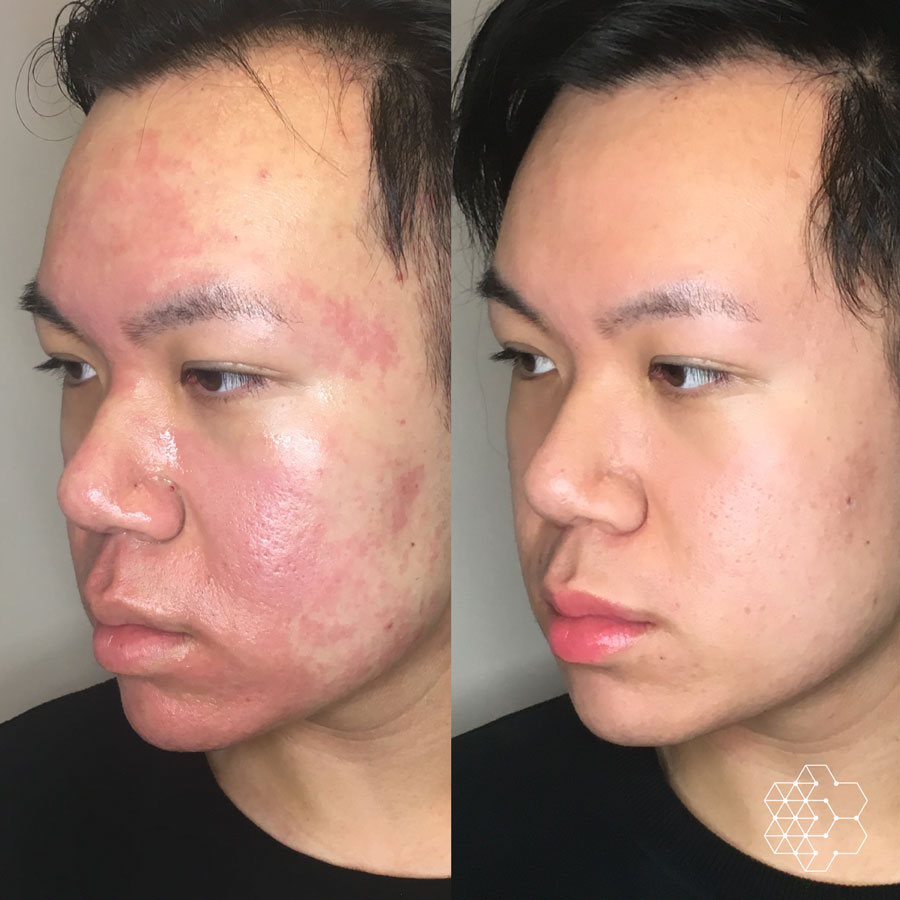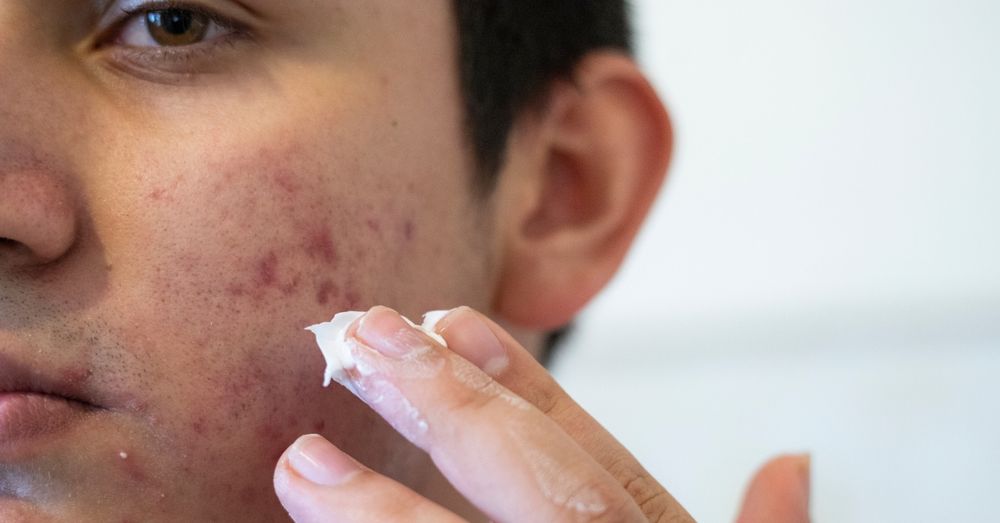Checking Out Skin Problem: Treating and recognizing Acne Scars for Healthier Skin
Acne scars stand for a significant concern for people looking for to preserve healthy skin, as they can influence both appearance and self-esteem. Understanding the various types of scars, from atrophic to hypertrophic, is necessary for figuring out proper therapy choices.
Comprehending Acne Scars
Understanding acne scars is important for any person that has experienced serious acne, as these marks can have an enduring effect on both physical look and psychological well-being. Acne marks create when the skin undertakes inflammatory responses during active acne lesions. The extent of scarring is usually influenced by aspects such as the kind of acne, its duration, and private skin characteristics.
The body's all-natural healing process can cause either atrophic marks, which show up as clinical depressions in the skin, or hypertrophic marks, which are raised and result from overproduction of collagen. Additionally, the mental toll of acne scars must not be ignored; many people report feelings of humiliation, stress and anxiety, and decreased self-confidence. This emotional worry can affect social communications and general top quality of life.
Resolving acne scars needs a comprehensive understanding of their formation and impact. Understanding of the possibility for long-lasting effects linked with without treatment marks can inspire people to look for proper therapies. Early intervention and reliable administration methods can dramatically enhance skin look and improve psychological strength, emphasizing the relevance of understanding the complexities bordering acne scars.
Kinds Of Acne Marks
Acne scars can be categorized right into distinctive kinds, each exhibiting special characteristics and calling for details treatment strategies. The key types of acne marks include atrophic, hypertrophic, and keloid marks.

Hypertrophic marks, on the other hand, are raised above the skin degree and are the result of excessive collagen manufacturing during the recovery procedure. They normally stay within the boundaries of the initial acne lesion. Keloid scars are comparable but prolong beyond the original injury website, forming larger, raised areas that can be agonizing or itchy.
Comprehending these kinds of marks is important for choosing ideal therapy alternatives. Various scars may react better to details treatments, such as laser therapies, fillers, or surgical interventions, stressing the value of a customized technique to acne scar management.
Recognizing Your Marks
Acne scars usually fall right into two groups: hypertrophic and atrophic scars. These can even more be identified into ice-pick marks, boxcar marks, and helpful site rolling scars, each showing distinct qualities and calling for various strategies for assessment - acne and acne scars treatment.
Hypertrophic marks, on the other hand, are elevated and happen as a result of excessive collagen production throughout the recovery procedure. Identifying the specific features of your marks-- such as depth, width, and texture-- is vital for appropriate recognition. In addition, take into consideration the distribution of scars throughout your skin, as this can show the seriousness and period of the acne condition.
Engaging with a skin specialist can offer valuable understandings right into the nature of your scars, helping in the distinction in between various types. A detailed understanding of your marks will eventually result in an extra tailored and efficient treatment strategy, making sure a clearer and much healthier complexion.
Treatment Choices Offered
Identifying the particular sort of acne marks present on your skin lays the foundation for checking out effective therapy choices. Typical sorts of acne marks consist of atrophic (clinically depressed), hypertrophic (elevated), and post-inflammatory erythema.
For atrophic scars, alternatives such as chemical peels, microneedling, and laser resurfacing are commonly utilized. Chemical peels off utilize acids to get rid of the outer layer of skin, advertising new cell development. Microneedling involves little needles that produce micro-injuries, promoting collagen manufacturing. Laser resurfacing targets damaged skin cells, enhancing texture and tone.
Hypertrophic marks can be treated with corticosteroid injections to flatten the mark or laser treatment to reduce inflammation and enhance appearance. acne treatment for sensitive skin. Silicone gel sheets and pressure dressings might also aid in handling elevated scars
In enhancement, facial fillers can temporarily fill out depressions from atrophic scars, while surgical excision might be appropriate for serious instances. Each treatment choice has its benefits and factors to consider, making it important to seek advice from with a dermatologist. They can give customized referrals based on the type and extent of your scars, along with your skin type and overall wellness.
Tips for Prevention
Reliable avoidance approaches can significantly lower the likelihood of creating acne scars. The initial step is to maintain a regular skin care regimen that includes mild cleaning, peeling, and hydrating. Utilizing non-comedogenic items assists protect against stopped up pores, which can intensify acne. In addition, including topical therapies containing salicylic acid or benzoyl peroxide can efficiently manage breakouts and lessen inflammation.
Staying clear of over here need to pop or select acne lesions is critical, as this can cause deeper skin damages and enhance the risk of scarring. Rather, take into consideration using a cold compress or non-prescription treatments to decrease swelling and inflammation.
Sunlight protection is one more essential facet of prevention; ultraviolet (UV) rays can darken marks and impede the recovery procedure. Using a broad-spectrum sun block with a minimum of SPF 30 daily can shield the skin and advertise also recovery.
Last but not least, keeping a balanced diet abundant in minerals, vitamins, and anti-oxidants sustains skin health and wellness and recovery. Remaining Recommended Reading hydrated and managing stress degrees can also play a significant duty in decreasing acne flare-ups. By carrying out these techniques, individuals can substantially decrease their opportunities of developing acne scars.

Conclusion
In verdict, understanding and identifying acne scars is necessary for effective treatment and accomplishing healthier skin. Numerous kinds of acne scars, including atrophic and hypertrophic scars, require specific interventions customized to private needs.
The body's natural healing procedure can result in either atrophic scars, which appear as clinical depressions in the skin, or hypertrophic marks, which are raised and result from overproduction of collagen. They are further divided into three subtypes: ice pick marks, boxcar scars, and rolling marks. Acne scars generally fall right into 2 groups: hypertrophic and atrophic marks. These can even more be categorized into ice-pick marks, boxcar scars, and rolling scars, each exhibiting distinct characteristics and calling for various techniques for evaluation.
Various types of acne scars, including atrophic and hypertrophic marks, require details treatments tailored to private needs.